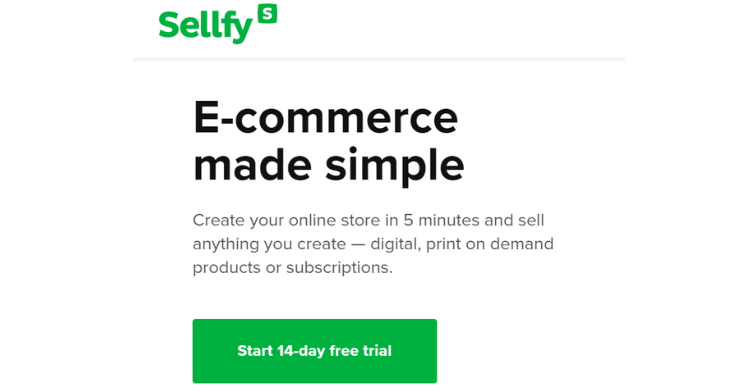
If you possess an entrepreneurial mindset, you may question the process of establishing an online store without inventory. Surprisingly, it is feasible to initiate an online business, even if it involves selling products, without needing any inventory. The concept of initiating an online store without inventory may appear unachievable, considering that e-commerce enterprises typically require inventory for customer shipments. However, that is not always the case.
When selling products online, if you don’t have inventory, it is necessary to have knowledge about successful online selling and the ability to create an online store. Conversely, selling products online with inventory restricts you to a greater extent in terms of available choices.
If you don’t want to deal with the hassle of having a warehouse, inventory, or logistics, you can still sell products to customers online. By avoiding the need for inventory, you can dedicate your time to growing your business rather than being concerned about shipping and delivery. If you’re interested in starting an online store without the need to store or ship products, continue reading to learn all the essential information.
1. Dropshipping
In essence, dropshipping involves a store owner acting as an intermediary between customers and vendors, who provide their products virtually through resellers and affiliates. These products are also available in various reseller shops. Consequently, the dropshipper’s role includes sourcing products, importing them to their store, enhancing their description to appear more professional, and adjusting the price.
Resellers, also known as “dropshippers”, earn commissions from selling these products without the need to store inventory. The vendor takes care of order fulfillment and directly ships the item to the consumer for each sale made by the reseller.
The dropshipping method offers a low level of risk and effort for running an online store. Instead of designing products, all you need to do is select the ones you want to promote. This leaves you with ample time for marketing and increasing sales. Basically, your main tasks are to find a vendor to collaborate with, determine your own product price, begin selling their products, and earn passive income.
Although dropshipping appears to be too good to be true, there are genuine drawbacks to consider. According to Dave Arnold from TabletopMonthly, he stopped dropshipping due to low margins, high costs of return inventory, and the abundance of customer inquiries about the whereabouts of their orders when shipping from a third-party warehouse. The frustrations outweighed the benefits. Furthermore, if you have a variety of products, you will need to establish multiple dropshipping arrangements with various distributors and manufacturers, which can add complexity. However, dropshipping can still be ideal for sellers who have limited start-up capital and are new to online retail.
2. Print on demand (POD)
If you choose to go the print-on-demand (POD) route, you will be collaborating with a supplier that produces white-label products such as totes, T-shirts, and baseball caps. These products are customized and sold under your own brand and designs. By combining brand licensing with your print-on-demand services, you can create products that already have a loyal brand following, thereby maximizing this approach. Although licensing will reduce your profits, it will enhance the reputation of your brand and expand the reach of your products. One example of this is obtaining a license from Disney.
Print on demand (POD) is advantageous for both the licensor and the licensee, resulting in a win-win situation. In fact, for its Disney Plus streaming service, Disney relied on the use of POD as a vital part of its licensing strategy. By collaborating with a well-established brand, it is possible for a store to experience significant growth, hence reinforcing the notion of mutual benefit.
There are several advantages to this model. Firstly, there is no need for bulk printing, with a focus on printing only when needed. Consequently, you will not face any financial risk and there is no possibility of having excess stock.
Additionally, there is no need for you to buy any equipment as your supplier takes care of the printing process. Moreover, engaging in this method is recommended before considering the purchase of your own equipment, as it allows for a gradual and natural expansion of your brand.
Similar to dropshipping, when you don’t handle the product, your control over quality and fulfillment is minimal. Furthermore, your reliance on the availability of your printing partner can result in longer order fulfillment times.
The model of print on demand is becoming oversaturated as the digital marketplace continues to grow, despite it being ideal for beginners and sellers with limited startup capital, as well as young brands seeking to expand with the help of the right partner.
3. Use a third-party logistics (3PL) partner
A comprehensive range of ecommerce fulfillment needs is offered by a third-party logistics partner or third-party warehouse. In this model of online stores, you possess inventory (technically), but you never have to handle, store, or ship it personally. A 3PL partner serves as the intermediary between retailers and manufacturers/suppliers, taking care of inventory management, order processing, warehousing, shipping, and receiving. Although it may seem similar to dropshipping, this approach is more intricate.
1. To begin, retailers acquire the product directly from the manufacturer, typically in bulk or wholesale quantities. 2. Following this, the manufacturer delivers the product to a 3PL partner, who takes charge of inventorying and warehousing it. 3. After the product has been properly inventoried, the retailer can proceed to include it in their online store as available for purchase. 4. Subsequently, customers select and pay for the product from the retailer. 5. Lastly, the retailer notifies their third-party partner, who in turn ships the product directly to the consumer.
By outsourcing the challenging aspects of online retail, you have more availability to concentrate on areas such as marketing.
Retailers who choose to work with third-party logistics providers (3PLs) benefit from having access to the most up-to-date supply chain automation technology. This enables them to obtain real-time data, such as product availability and tracking information, which is crucial for serving customers effectively. On the other hand, resellers or affiliates who don’t have a third-party partner are dependent solely on their manufacturer or supplier, lacking the necessary real-time logistics capabilities to assist their customers.
The 3PL model provides convenience, but it may come at a significant cost. It is most suitable for well-established stores with a consistent customer base. Dropshipping or print on demand is better suited for new or less established online marketplaces.
4. Affiliate store
By starting an affiliate store, there is no need to be concerned about sourcing products for online selling. Instead, one collaborates with other sellers who compensate by granting commissions for the sale of their merchandise on your e-commerce platform.
You can have various types of affiliate stores, such as those selling books, pet products, and other physical items. Whenever a product is sold, you receive a commission, and the seller is responsible for fulfilling the order, eliminating concerns about inventory or shipping.
Once you find a partner, affiliate stores simplify the process of starting your business. Instead of dedicating all your efforts to inventory management and shipping, you can dedicate your attention to marketing the products, which will lead to increased sales and higher profits.
Regrettably, affiliates receive only a small fraction of the sale, which means you will have to sell a significant quantity to generate a satisfactory profit. Moreover, your business could be affected if the seller encounters any customer service problems.
Affiliate e-commerce stores work well for individuals with sales and marketing skills, allowing them to sell numerous products efficiently. People with significant social media followings can form partnerships with brands to endorse and market their products, making this path particularly suitable for them.
5. Digital products and services
Not all e-commerce businesses focus on selling physical goods. Instead, it is possible to sell digital goods and services directly on your website without the need for inventory since everything is in a digital format. The specific digital goods and services that can be sold will vary depending on your target audience, but they may encompass:
- Educational courses
- Digital artwork and prints
- E-books
- Memberships
- Online services like tutoring
If you decide to go in this direction, it is necessary to have digital products and services available for customers to buy. Therefore, selecting a specific area of focus will be necessary. For instance, if your intention is to sell online services such as yoga classes or website subscriptions, you will need to consistently generate fresh content in the form of videos or courses.
6. Fulfillment by Amazon
Fulfillment by Amazon (FBA) is a program that permits businesses of any type to operate an e-commerce store without the need to handle their own inventory. Instead, products will be sent directly to Amazon’s fulfillment centers, where they will oversee, select, and package items for delivery to customers.
If you decide to utilize the Amazon FBA program, you will have the opportunity to reach millions of customers. This enables you to obtain products, transport them to a warehouse, and engage in online sales. It is advisable to dedicate time to understand and familiarize yourself with the FBA platform and the various strategies for promoting your products to maximize sales.
By participating in the Amazon FBA program, you will decrease your time investment, although there is a monetary expense. Amazon implements charges for both storing your items and completing orders. However, they also take care of any customer service matters on your behalf.




